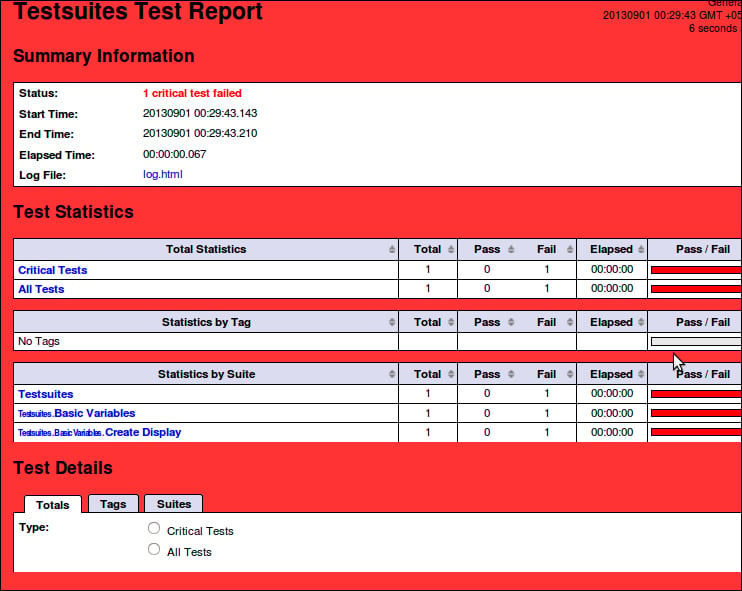In any xUnit test result, red denotes failure and green denotes success. This coloring has also led to the popular TDD mantra of "Red, Green, Refactor" in unit tests, which denotes the order of development as first the tests are created with an intention to naturally fail followed by writing code in such a manner that the tests pass and finally refactoring over existing code can be made in such a manner that nothing is broken.
The following screenshot demonstrates a test application passing entirely as the green color background is clearly visible:

Similarly, the failure of the test suite can also be reflected through the background color. Note that, even if a single test case fails, the entire report will have the color of failure and the end user can easily take note, as shown in the following screenshot:

This convention is also followed in the Robot Framework as is evident from the report background color as well as the colors used in the executed tests inside the...



